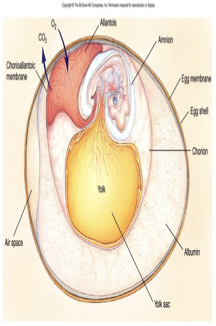animal kingdom 11j
1/16
There's no tags or description
Looks like no tags are added yet.
Name | Mastery | Learn | Test | Matching | Spaced |
|---|
No study sessions yet.
17 Terms
General Features of Animals
All animals are multicellular eukaryotes
They are diverse in form
Invertebrates are animal species that lack a backbone
Vertebrates have a backbone (about 1% of Kingdom Animalia)
No cell walls
Active Movement (most)
Sexual Reproduction
Embryonic Development
Heterotrophs
The Simplest Animals: Phylum Porifera
Simple invertebrates
Live in aquatic environments
Classified due to their unique feeding system
Tiny pores in their outer walls draw water in. Cells in the sponge walls filter goodies from the water
Asymmetrical symmetry
One tissue layer
Ex. sponges
Sponges
Reproduce by sexual (eggs and sperm sent into water) and asexual reproduction (budding)
Phylum Cnidaria
consists of invertebrates including jellyfish, sea anemones, sea coral and hydroids.
Able to undergo extracellular digestion
All carnivores
Radial symmetry
2 tissue layers
reproduce both sexually and asexually (budding or fragmentation).
Some species can produce both eggs and sperm in the same organism (hermaphrodites).
Symmetry
Symmetrical objects have similar parts that are arranged in a similar manner
Three types of symmetry
Asymmetry – no pattern in parts (sponge)
Radial Symmetry – when a body is constructed around a central axis (starfish)
Bilateral symmetry – equivalent parts on both sides of a plane, includes a definite head end, known as cephalization (human, butterfly)
Phylum Platyhelminthes
In phylum Platyhelminthes (flatworms), they have bilateral symmetry
Invertebrates
3 tissue layers
Includes Tapeworms
Reproduce sexually – they produce both eggs and sperms, hence these organisms are known as hermaphrodites. Asexually (binary fission).
They can also be split at certain points and regenerate.
Flatworms
Have a simple body design, but do have a definite head and organs
Most species are parasitic, occurring within the bodies of many other kinds of animals
Phylum Nematoda - Hookworm
Includes nematodes, eelworms and rotifers
Have bilateral symmetry
Pseudocoelom – What seems to be a gut cavity
Nematodes mouth is equipped with piercing organs, sucking brings in food. Food enters digestive tract and is eliminated through the anus.
Mainly reproduce sexually
What is a Coelom?
the fluid-filled body cavity of an animal that contains the internal organs
Phylum Mollusca
Bilateral symmetry
Sexual reproduction
True coelomates (have a real body cavity)
Most have a radula = rough, tongue-like organ to scrape algae off rocks
Many different body plans (3 main classes 👇)
Gastropods – snails, slugs
→ Move with muscular foot
→ Mantle makes 1 hard shell
Bivalves – clams, oysters, scallops
→ 2-part hinged shell
→ Filter feeders
Cephalopods – octopuses, squids
→ No shell, move by jet propulsion using mantle
→ Smart + fast
Phylum Annelida - earthworms
Bodies are segmented
Sexual and asexual(budding or fission) reproduction
Bilateral symmetry
Coelomates
Includes: Earthworms, brittle worms
The advantage of segmentation is that segments can have different functions, such as reproduction, feeding
* when cut in specific spots- they can regenerate
Phylum Arthropoda
Includes insects, crabs, shrimp, lobsters, crayfish, water fleas
Bilateral symmetry
Coelomates
Sexual reproduction
Have jointed appendages + exoskeleton (made of chitin)
Exoskeleton functions:
Protects from predators
Prevents water loss
Provides muscle attachment points
Two main groups:
Chelicerates – no jaws (no mandibles)
→ includes spiders, mites, scorpions
Mandibulates – have mandibles (jaws)
→ includes crustaceans, insects, centipedes, millipedes
Phylum Echinodermata - seastars
include sea stars, sea urchins, sand dollars and sea cucumbers
They are deuterostomes (anus forming before the mouth) during development.
Sexual and asexual (dividing into parts) reproduction
The endoskeleton is composed of hard calcium-rich plates just beneath a delicate skin
They have pentamerous (5-way) symmetry.
All members have a water vascular system which acts like a line of suction cups along radial canals to tube feet.
Deuterostome vs Protostome
Protostome – mouth forms before anus
- less complex organism
Deuterostome – anus forms before mouth
-more complex body organization than protostomes
Phylum Chordata
Terrestrial vertebrates are included in this group
Bilateral symmetry
The major evolutionary innovation in this group is the notochord (skeletal cartilage rod for support)
Sexual reproduction
Deuterostomes
Amniotic Egg
Amphibians: first land animals, but still tied to water for reproduction and body fluids
Key adaptation: development of waterproof skin
Amniotic egg: allowed vertebrates to reproduce on land
Specialized membranes in the egg:
Gas exchange
Waste storage
Energy storage for developing embryo

Class: Mammals
Hair: traps body heat
Females produce milk to nourish offspring (from special glands)
Types of mammals:
Monotremes – lay eggs (platypus, echidna) → the only mammals that do this
Marsupials – early birth, young continue development in pouch
Placental mammals – embryo develops mostly in placenta before birth